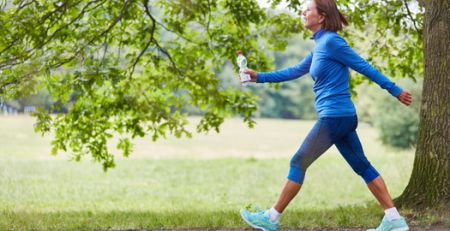Improve Your Memory, Mood and Thinking Skills Through Exercise
We all know that regular exercise is good for the body. It helps us to reduce the size of fat stores, increases muscle mass, and improves cardiac output and circulation, but it can also boost brain function! There is new evidence demonstrating an association between cardiorespiratory fitness and brain health—particularly in grey matter and total brain volume (areas of the brain involved with cognitive decline and aging).
It has been shown that there are a number of physiological benefits within the brain as a result of exercise, ranging from the molecular to behavioural level. This comes from its ability to reduce insulin resistance, reduce inflammation, and stimulate the release of growth factors and hormones.
Brain-Derived Neurotrophic Factor (BDNF):
This is a protein that is essential for healthy cognitive function and is linked with neurogenesis (developing new neurons) and plasticity (adaptiveness of the brain). Neurogenesis only occurs in one part of the brain, the Hippocampus. This area is responsible for learning and memory, which decreases in size as part of the aging process. BDNF has been shown to prevent loss of, and even increase, the volume of the hippocampus, thus, regular physical activity may protect memory in the long term by inducing neurogenesis via BDNF.
There is evidence that an increase in BDNF, along with other cellular mechanisms, can help to prevent and even treat psychiatric and neurological disorders such as, depression, Alzheimer’s Disease, Huntington’s Disease and Multiple Sclerosis. There are probably multiple cellular and molecular pathways involved in this and act in synergy. A lot of new studies have been aiming to figure out the best combinations of exercise and drugs to slow down the neuropathology while improving the life quality of the patients.
Memory:
Almost all the research has looked at walking exercise to improve memory skills and have recommended 30 minutes of moderate physical activity most days of the week, or 150 minutes a week. The key is to do enough activity where you increase your heart rate to break out into a little sweat!

Cardiorespiratory exercise increases the growth of new blood vessels where neurogenesis takes place and improves the health and function of existing blood vessels. It can even treat hypertension (high blood pressure), which is a risk factor for development of dementia.
The Happy Hormones:
Exercise works by releasing hormones and neurotransmitters that make us feel good. Endorphins suppress pain and have sedative properties like morphine. Dopamine and endocannabinoids are associated with emotion and the brain’s reward system, and can help decrease depression, tension and negative mood. Since the 1960’s, it was known that long-distance running could cause what was called the “runner’s high”, a sudden sense of euphoria and well-being, accompanied by analgesia. Regular exercise has also been shown to improve an elderly person’s self-esteem, as well as better performance of daily activities, such as getting dressed and bathing, in patients with dementia.
Neuroplasticity:
Neuroplasticity is the brain’s ability to change its functional and structural characteristics to adapt to the ever-changing surrounding world and is orchestrated by several neurotransmitters. Research indicates that exercise has an important role in the regulation of neuroplasticity by stimulating new connections between cells in important cortical areas of the brain.
Exercise, Exercise, and more Exercise!
In general, anything that is good for your heart is great for your brain! Aerobic exercise improves brain function and acts as a “first aid kit” on damaged brain cells. Exercising in the morning not only spikes brain activity and prepares you for mental stresses for the rest of the day, but also increases retention of new information and better emotional reactions to stressful situations. Increased heart rate pumps more blood and oxygen to the brain and initiates the production of hormones that provide a nourishing environment for the growth of new brain cells.
As with regular chiropractic adjustments, habitual exercise has a variety of positive effects on the human body, while at the same time maintaining a health mind, at any age. It represents a drugless strategy to delay the physiological effects of aging, and pathological neurodegeneration on brain health. One thing is very clear: Getting at least 150 minutes of physical activity per week, at moderate to vigorous intensity levels, will keep you sharper in the short-term, decrease your risk of depression by 20%, and may even help protect against future mental illness.
When looking for a good exercise to help your mental health, opt for ones that can spike your heart rate in intervals while incorporating the coordination of your body’s movements. Resistance training, balance and muscle toning exercises did not have the same results for brain health. Household activities can count as well, such as intense floor mopping, raking leaves, or anything that gets your heart pumping!

Preventing mental illness is just as important as preventing other chronic conditions such as heart disease, diabetes and cancer. Whatever the exercise and motivators you choose, commit to establishing exercise as a habit, just like taking a prescription medication. Exercise is medicine. It goes to the top of anyone’s list of reasons to work out!




